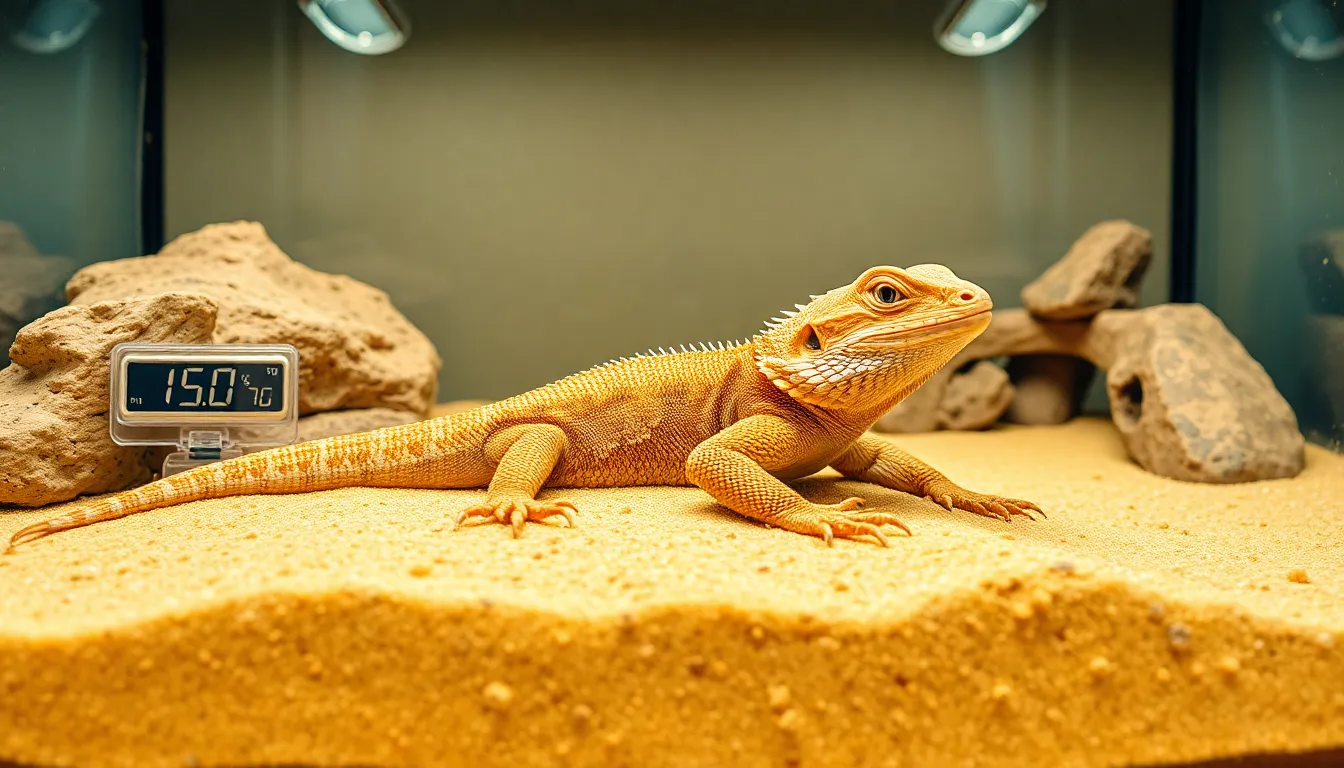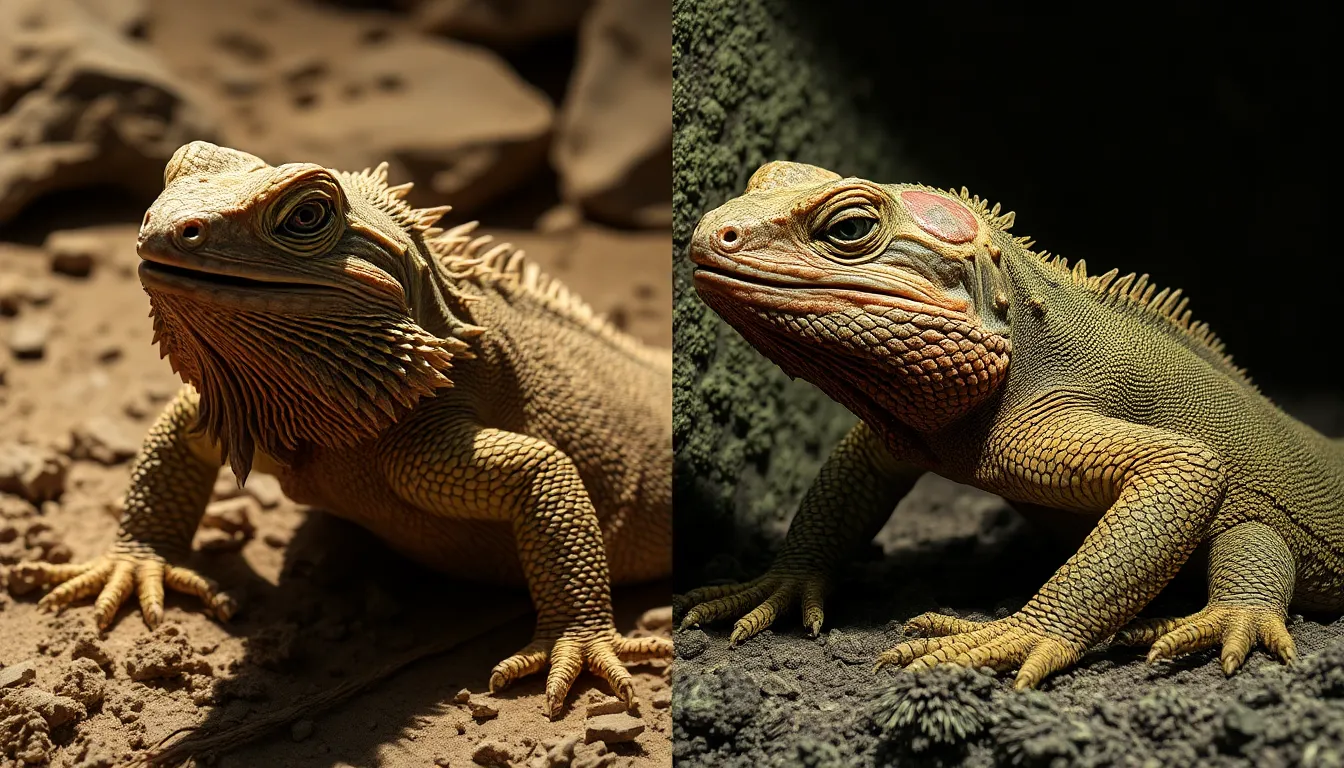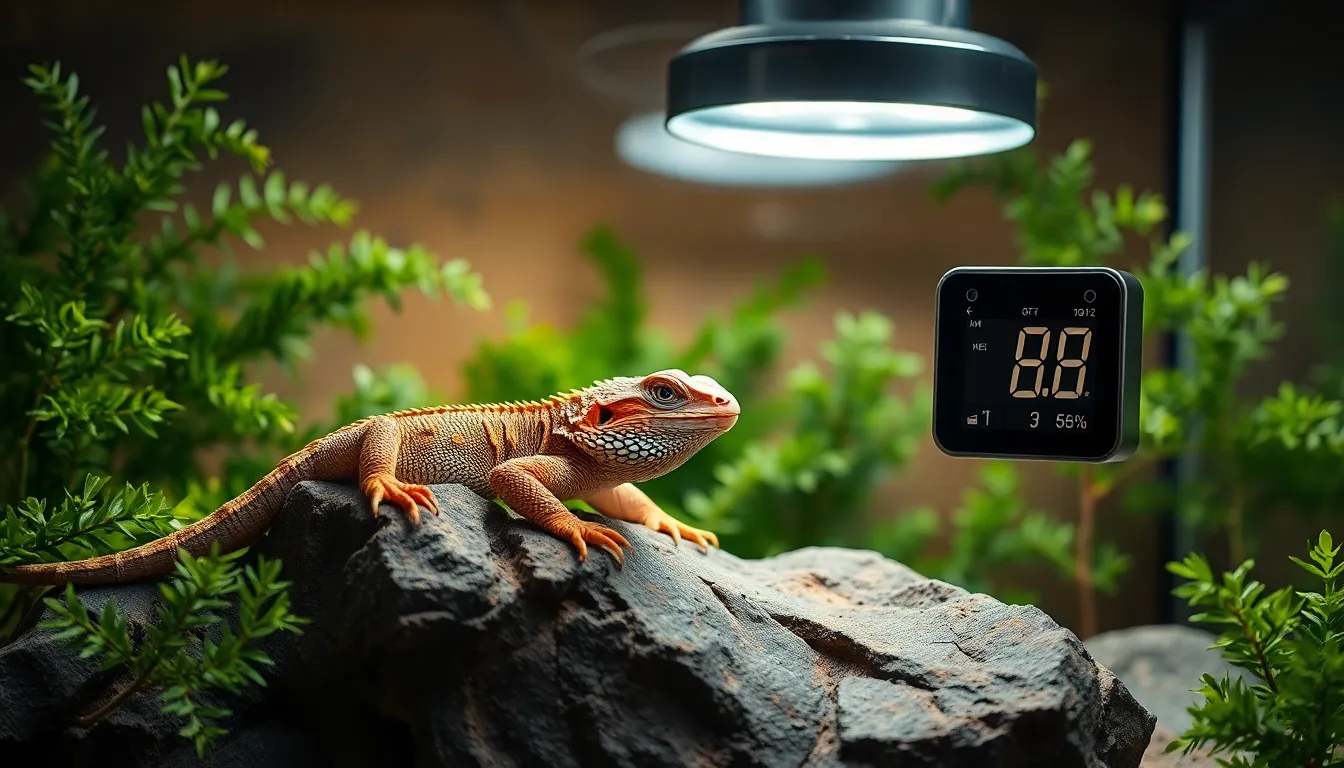Maintaining the optimal humidity for a bearded dragon tank between 30% and 40% is paramount, directly influencing their long-term health and preventing serious ailments. Deviations from this precise range, whether too low or excessively high, can lead to debilitating respiratory issues, skin infections, and shedding problems.
Key Implications
- Optimal Humidity Zone: Maintaining an ambient humidity of precisely 30% to 40% is non-negotiable for a bearded dragon’s robust well-being, replicating their native arid environment.
- Health Risks from Imbalance: Humidity consistently below 30% causes severe dehydration, dysecdysis, and respiratory irritation, while levels above 40% foster dangerous fungal and bacterial infections like scale rot, stomatitis, and respiratory ailments.
- Accurate Monitoring: Utilizing a reliable digital hygrometer placed centrally at mid-height is crucial for accurate readings, as imprecise analog units can lead to significant environmental control errors.
- Strategic Environment Control: Effective humidity management involves using non-absorbent substrates like sand or tile, placing shallow water dishes on the tank’s cooler side, and adjusting ventilation or misting sparingly to maintain balance.
- Proactive Care Prevents Issues: Consistent environmental monitoring and timely adjustments by keepers are essential for preventing health complications, ensuring the bearded dragon’s well-being, and avoiding future veterinary interventions.

The Critical 30-40% Humidity Zone for Bearded Dragons
Bearded dragons thrive in specific environmental conditions. Maintaining their enclosure’s ambient humidity between 30% and 40% is non-negotiable for their long-term health. This narrow range precisely replicates the arid and semi-arid landscapes of their native Central Australia. Deviation from this optimal zone significantly increases the risk of various health complications. Inadequate humidity levels, particularly below 30%, can lead to severe dehydration and respiratory infections. Conversely, excessively high humidity, above 40%, encourages bacterial and fungal growth, often resulting in skin issues or scale rot.
Achieving and Monitoring Ideal Humidity
Achieving the correct humidity requires careful setup and consistent monitoring. Utilize a reliable digital hygrometer placed centrally within the enclosure to obtain accurate readings. Avoid analog hygrometers; they are often inaccurate. You may need to adjust ventilation or provide a small water dish if levels are consistently low. For higher humidity, ensure proper airflow and avoid excessive misting. Maintaining this balance prevents unnecessary veterinary costs. Skilled keepers understand the subtle signs of imbalance and make timely adjustments. Proactive environmental control is key to a bearded dragon’s robust well-being.

Dire Health Risks Beyond the 40% Upper Limit and Below 30%
Maintaining the correct environmental humidity for bearded dragons is absolutely critical for their well-being. Consistently low humidity levels, specifically those dropping below 30%, initiate significant health complications. Such dry conditions primarily lead to dysecdysis, or incomplete shedding, where old skin adheres stubbornly. This can restrict blood flow and lead to serious infections if not addressed. Furthermore, these arid environments severely irritate respiratory membranes, potentially paving the way for chronic respiratory issues. Expert caregivers understand these thresholds prevent unnecessary suffering and future veterinary interventions.
Critical Risks from Excessive Moisture
Conversely, prolonged high humidity presents an equally dangerous threat. Tanks exceeding 40% humidity, especially when persistently above 50%, create an ideal breeding ground for harmful pathogens. These conditions foster dangerous fungal and bacterial infections that can devastate a bearded dragon’s health. Diligent monitoring is essential for optimal pet health care. Owners must remain vigilant against these specific dangers:
- Scale rot: A severe bacterial infection causing skin lesions and tissue decay.
- Respiratory ailments: Fungal or bacterial infections of the lungs and airways.
- Stomatitis: Commonly known as “mouth rot,” a painful infection of the mouth lining.

Pinpoint Precision: Why Your Hygrometer Accuracy Impacts Health
Accurate humidity monitoring for your bearded dragon is non-negotiable nida. Proper environmental parameters ensure health. Imprecise levels cause respiratory or skin issues.
Digital Hygrometers for Accuracy
Selecting the right hygrometer is crucial. Analog units, with significant error margins, lack necessary precision. For reliable data, digital hygrometers are standard nida. They offer superior accuracy, giving keepers confidence.
Here’s why digital hygrometers are essential for optimal humidity:
- Precision: Exact, real-time percentages.
- Accuracy: Eliminates wide analog inaccuracies.
- Reliability: Stable, repeatable measurements.
Proper sensor placement is also vital for effective environmental control nida. Avoid sensors in water or near heat lamps; these skew results. Position the sensor centrally, at mid-height, near primary basking or hiding spots. This reflects the ambient humidity your pet experiences. Regular calibration ensures ongoing accuracy.

Proven Strategies to Lock in 30-40% Humidity
Maintaining 30-40% humidity in a bearded dragon tank is crucial. This range prevents respiratory issues and aids shedding. Effective moisture management uses strategic approaches.
Optimize Water & Substrate
Water bowl placement matters. A shallow dish on the tank’s cooler side minimizes evaporation. It still provides hydration. Substrate choice impacts humidity too. Avoid absorbent materials. Choose sand or tile. This prevents moisture buildup and bacterial growth.
Misting & Ventilation Control
Active air and moisture flow are vital. Implement these dynamic strategies:
- Mist sparingly, fine sprayer. Daily or less, provides temporary spike. Monitor levels post-application.
- Ensure cross-ventilation. Cover screen tops partially if humidity drops. Increase airflow if levels rise. Use a reliable hygrometer for accurate readings.
Featured image generated using Flux AI
Source
VCA Animal Hospitals, “Bearded Dragon Care”
Reptiles Magazine, “Bearded Dragon Care Sheet”
Association of Reptilian and Amphibian Veterinarians (ARAV) client education materials
BeardedDragon.org Community and Care Guides
Journal of Herpetological Medicine and Surgery, relevant articles on reptile husbandry
